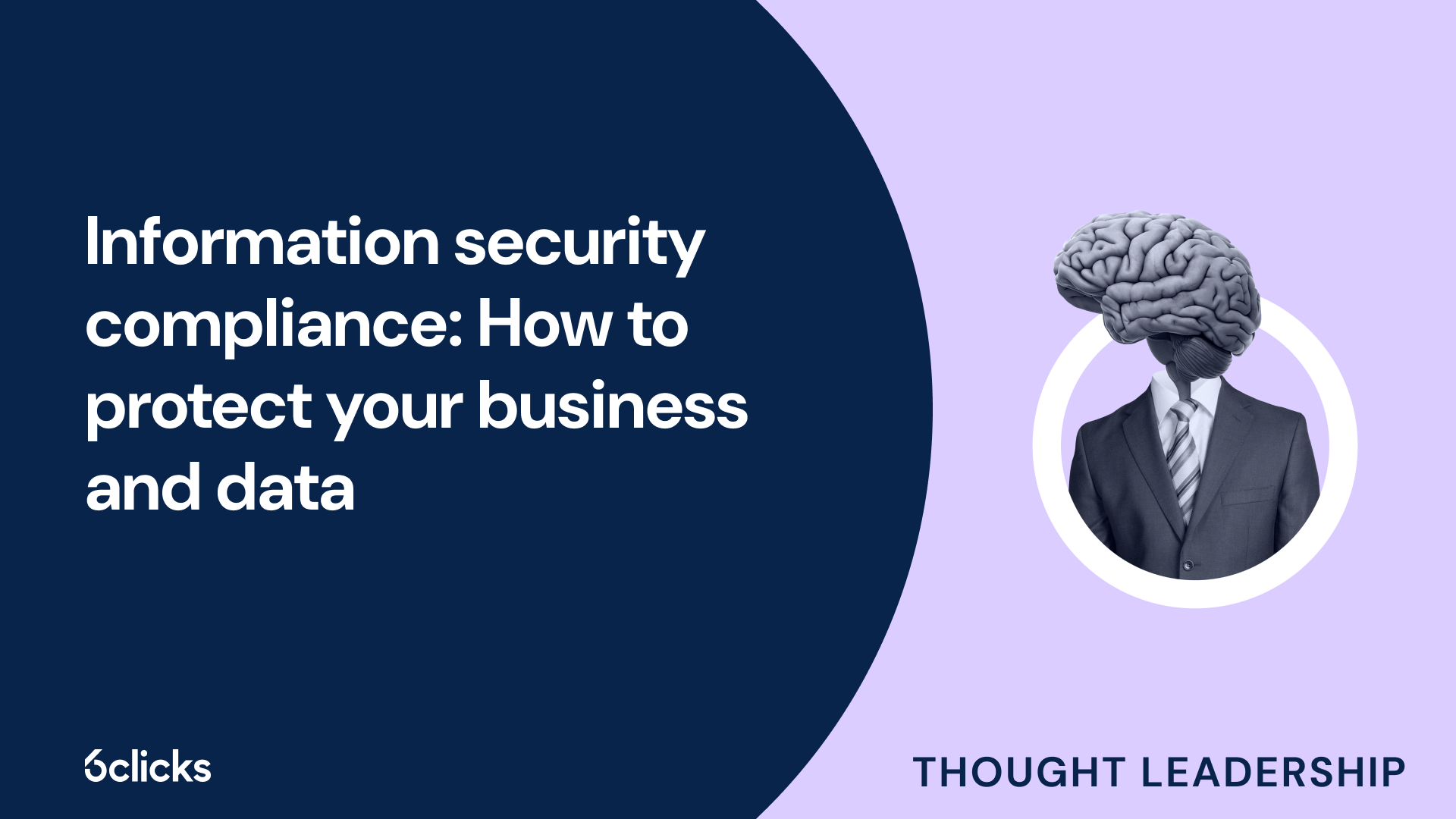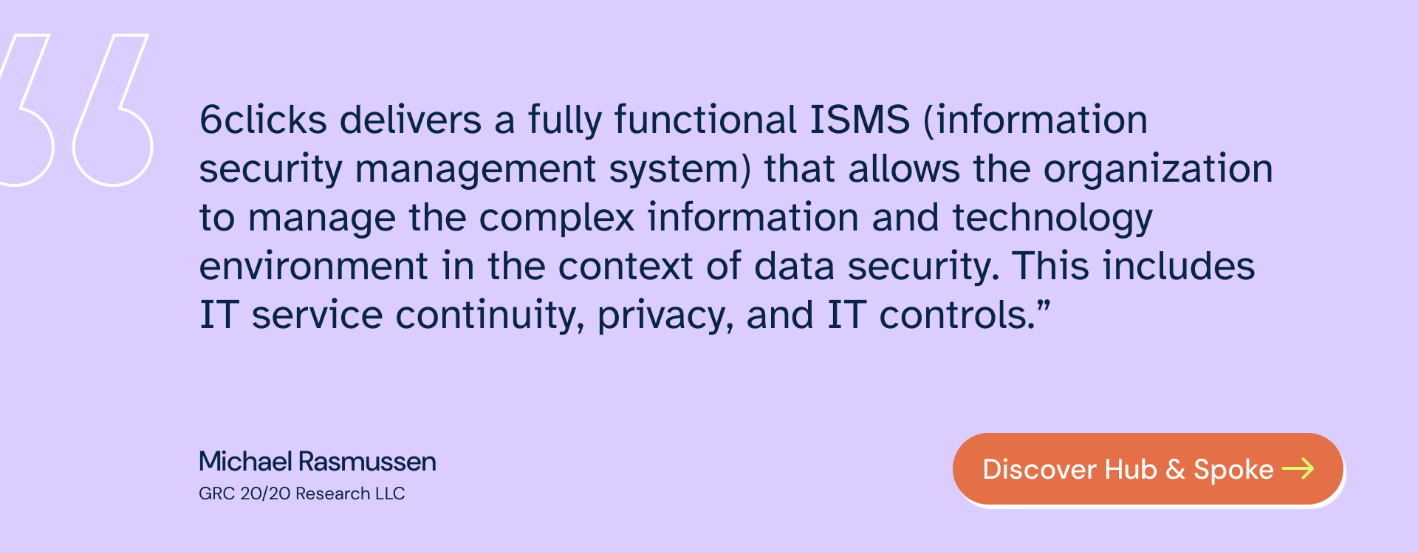Information security compliance is essential for protecting valuable data, ensuring legal and ethical operations, and maintaining customer trust. With increasing cyber threats and evolving compliance requirements, businesses must align their security measures with regulations and standards such as GDPR and ISO/IEC 27001. Non-compliance can lead to significant costs, reputational damage, and operational disruptions. By implementing a structured compliance strategy, organizations can mitigate risks, safeguard sensitive data, and demonstrate their commitment to cybersecurity. For a deeper dive into the components and benefits of information security compliance, read more below.
What is information security compliance?
Information security compliance refers to an organization's adherence to laws, regulations, and industry standards designed to protect sensitive data from unauthorized access, use, manipulation, and disclosure. It involves implementing policies, controls, and procedures that align with frameworks such as:
- ISO 27001 - A globally recognized standard for building an Information Security Management System (ISMS), outlining requirements such as risk assessment, establishing an information security policy, securing leadership support, implementation of controls, and continuous monitoring and improvement
- NIST CSF - The National Institute of Standards and Technology's (NIST) Cybersecurity Framework provides organizations with a flexible approach to managing cybersecurity risks, detailing guidelines and controls categorized into 6 functions: Govern, Identify, Protect, Detect, Respond, and Recover.
- SOC 2 - The System and Organization Controls Type 2 is a compliance framework that establishes criteria for managing customer data and requires organizations to implement a variety of controls to meet 5 Trust Principles: security, availability, processing integrity, confidentiality, and privacy.
- PCI DSS - The Payment Card Industry Data Security Standard sets specific technical and operational requirements for organizations handling customer data associated with payment transactions, including network and systems security, data encryption, vulnerability management, and more.
Why compliance matters
Implementing these frameworks is often required for service providers and other companies working with organizations in critical sectors like government, finance, and healthcare, as they facilitate compliance with information security laws and regulations such as the Healthcare Insurance Portability and Accountability Act (HIPAA) and the General Data Protection Regulation (GDPR).
Moreover, compliance reduces risks, strengthens your security posture, and increases your organization's credibility, therefore improving customer trust. By implementing compliance measures, businesses can prevent costly data breaches, which often lead to legal repercussions and reputational damage. These measures ensure sensitive information, such as customer data and intellectual property, remains secure from cyber threats. A strong compliance program also helps organizations avoid disruptions caused by security incidents, facilitating smoother business operations.
Customers, partners, and stakeholders are more likely to engage with organizations that prioritize data security. Demonstrating a commitment to compliance not only enhances your brand reputation but also provides a competitive advantage in today’s market.
Building an effective information security compliance program
Your information security compliance program should address the following areas to be effective:
- Risk assessment: Identifying risks to sensitive data is the first step toward a robust compliance program. This process involves analyzing the organization's systems, processes, and data to uncover vulnerabilities and potential threats.
- Policy enforcement: Clear policies and procedures are the backbone of any compliance program. These define how data should be handled, stored, and accessed within the organization, as well as the roles and responsibilities of employees in safeguarding sensitive information.
- Control implementation: Develop and apply safeguards such as firewalls, access control, patch management, penetration testing, and other security measures to address identified risks and reduce their likelihood and impact.
- Training and awareness: Employees play a crucial role in maintaining compliance. Provide consistent training to help staff understand policies, recognize security threats, and respond appropriately to incidents.
- Monitoring and improvement: Conducting regular audits is essential in verifying and maintaining the effectiveness of compliance measures. Audit findings can be used to refine and strengthen your compliance strategies and help identify gaps or areas of non-compliance so you can implement corrective action promptly.
Best practices for compliance
Prioritizing information security and meeting compliance requirements come with certain challenges, but there are ways to stay on top of them.
First is by creating a robust security culture, involving all levels of the organization from leadership to lower-level staff, in understanding the importance of compliance. When security is embedded into the daily operations and core values of the team, it becomes second nature, reducing vulnerabilities and fostering long-term success.
Next, organizations can leverage technology to simplify compliance tasks. Automation and compliance monitoring tools can significantly reduce the time and effort needed to manage regulatory requirements. Solutions like 6clicks offer integrated features for streamlined risk assessments, AI-powered policy and control implementation, and continuous monitoring to improve accuracy and enhance efficiency.
Lastly, compliance is not a one-time achievement but an ongoing process that requires regular review and improvement. Conduct periodic audits, analyze incidents, and track changes to regulations to stay proactive in your security and compliance efforts.
Get started with 6clicks
Simplify information security compliance with powerful capabilities. Here's how you can leverage the 6clicks platform to kickstart your compliance program:
- Freely access frameworks through 6clicks' Content Library - Download control sets, assessment templates, and frameworks such as ISO 27001, NIST CSF, and SOC 2 through a built-in content library.
- Automate compliance with Hailey AI - Use 6clicks' AI engine to automate framework mapping and gap analysis, policy and control creation, and responses to repetitive audit questions.
- Streamline risk management with powerful risk registers - Conduct risk assessments and create risk treatment plans all in one register with customizable fields and workflows and task assignment features.
- Gain insights through reporting and analytics - Customize data dashboards and generate turnkey reports to instantly retrieve in-depth insights into your security and compliance posture.
Frequently asked questions
What are the key components of a successful information security compliance program?
A robust compliance program should include a thorough risk assessment to identify potential threats, clear policies to enforce data protection, and effective controls like firewalls and access management. Employee training, continuous improvement, and regular audits are also vital for maintaining alignment with security standards and addressing any gaps in compliance.
What frameworks should organizations consider for information security compliance?
Organizations should consider frameworks like ISO 27001, NIST CSF, SOC 2, and PCI DSS to ensure they meet industry standards for data protection. These frameworks provide structured guidelines on risk management, data security, and incident response, facilitating compliance with regulations such as GDPR and HIPAA and helping businesses strengthen cybersecurity.
How can businesses streamline the compliance process?
Businesses can simplify compliance by integrating security into core organizational processes and leveraging technology to automate tasks. Platforms such as 6clicks can help by offering AI-powered capabilities and continuous monitoring to streamline compliance management. Regular audits and keeping up with changing regulations further support ongoing compliance efforts.
Written by Anthony Stevens
Ant Stevens is a luminary in the enterprise software industry, renowned as the CEO and Founder of 6clicks, where he spearheads the integration of artificial intelligence into their cybersecurity, risk and compliance platform. Ant has been instrumental developing software to support advisor and MSPs. Away from the complexities of cybersecurity and AI, Ant revels in the simplicity of nature. An avid camper, he cherishes time spent in the great outdoors with his family and beloved dog, Jack, exploring serene landscapes and disconnecting from the digital tether.










